History of the Jewish People in France
January 19, 2015
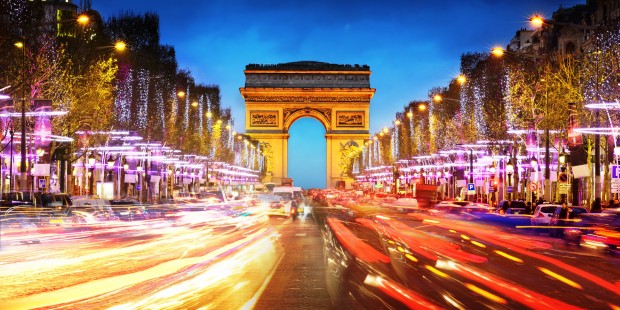
Throughout the country’s stormy history – from the Roman period through the present – Jews have lived in France, their fate intimately tied to the various kings and leaders. Despite physical hardship and anti-Semitism, Jewish intellectual and spiritual life flourished, producing some of the most famous Jewish rabbis and thinkers, including Rashi and Rabenu Tam.
Jews have contributed to all aspects of French culture and society and have excelled in finance, medicine, theater and literature. Currently, France hosts Europe’s largest Jewish community – 480,000 strong – and Paris is said to have more kosher restaurants than even New York City.
Roman Period to the Medieval Period
The Middle Ages
A Jewish presence existed in France during the Roman period, but the community mainly consisted of isolated individuals, rather than an established community. After theRoman conquest of Jerusalem, boats filled with Jewish captives landed in Bordeaux, Arles and Lyons. Archeological finds of Jewish objects with menorahs imprinted on them date back to the first through fifth century.
Jewish communities have been documented in 465 in Vannes (Brittany), in 524 in Valence and in 533 in Orleans. Jewish immigration increased during this period and attempts were made to convert the Jews to Christianity.
In the 6th century, a Jewish community thrived in Paris. A synagogue was built on the Ile de la Cite, but was later torn down and a church was erected instead.
Anti-Jewish sentiments were not common in this early period, in fact, after a Jewish man was killed in Paris in the 7thcentury, a Christian mob avenged his death.
During the 8th century, Jews were active in commerce and medicine. The Carolingian emperors allowed Jews to become accredited purveyors in the imperial court. Jews also became involved in agriculture and dominated the field of viticulture; they even provided the wine for Mass.
The First Crusade (1096-99) had no immediate effect on the Jews of France, however, in Rouen, statements were made by the Crusaders justifying their persecution of Jews across Europe.
After the Second Crusade (1147-49), a long period of persecution began. French clergyman gave frequent anti-Semitic sermons. In some cities, such as Beziers, Jews were forced to pay a special tax every Palm Sunday. In Toulouse, Jewish representatives had to go to the cathedral on a weekly basis to have their ears boxed, as a reminder of their guilt. France’s first blood libel took place in Blois in 1171 and 31 Jews were burned on the stake.
The situation detiorated during the rule of King Philip Augustus. Philip was raised believing that Jews killed Christians and, therefore, held an ingrained hatred toward the Jews. After four months in power, Philip imprisoned all the Jews in his lands and demanded a ransom for their release. In 1181, he annulled all loans made by Jews to Christians and took a percentage for himself. A year later, he confiscated all Jewish property and expelled the Jews from Paris; he readmitted them in 1198, only after another ransom was paid and a taxation scheme was set up to procure funds for himself.
In 1215, the Fourth Lateran Council forced Jews to wear a badge in the provinces of Languedoc, Normandy and Provence.
More anti-Jewish persecutions took place in the western provinces during the rule of Louis IX (1226-70). In 1236, crusaders attacked the Jewish communities of Anjou and Poitou and tried to baptize all the Jews, those that resisted were killed. An estimated 3,000 Jews were murdered.
In 1240, Jews were expelled from Brittany and the famous disputation of the Talmud began in Paris. The Talmud was put on trial and was subsequently burned in 1242. Despite the persecution, Jews managed to remain active in money-lending and commerce. Jews expelled from England were also admitted into France. Again, in 1254, Jews were banished from France, their property and synagogues were confiscated, however, after a couple of years, they were readmitted.
Phillip IV the Fair ascended to power in 1285. In 1305, he imprisoned all the Jews and seized everything they owned except the clothing on their backs. He expelled 100,000 Jews from France and allowed them to travel with only ones day’s provisions. Phillip IV’s successor, Louis X, allowed the Jews to return in 1315.
A Jewish presence was first mentioned in Besancon, in eastern France, in 1245. Jews left the town in the 15th century, and returned only after the French Revolution. Jews were first permitted to reside in Belfort, the capital of the Belfort region in eastern France, in the 1300s. By the time of the Nazi occupation there were 700 Jews in the town, of which 245 were killed.
Between 1338-1347, 25 Jewish communities in Alsace were victims of terror. Massacres in response to the Black Plague (1348-49) struck Jewish communities throughout the east and southeast. The Jews of Avignon and Comtat Venaissin were spared similar fates because of intervention from the pope. Further bloodshed spread to Paris and Nantes in 1380. The culmination of all the persecution and bloodshed was the definitive expulsion of Jews from France in 1394.
Despite all the expulsions and persecutions, Jewish learning managed to thrive during the middle ages. Both Il-de-France and Champagne became centers for Jewish scholarship and other centers of learning grew in the Loir Valley, Languedoc and Province. In the north, talmudic and biblical commentary, as well as, anti-Christian polemic and liturgical poetry were studied. Whereas, in the south, grammar, linguistics, philosophy and science were studied. Also, in the South, numerous translations were made of religious materials from Arabic and from Latin to French.
One of the foremost Jewish scholars during the Middle Ages was Rashi, who started his own yeshiva in France. His biblical commentary is one of the most popular and widely known works today.
Large numbers of Marranos, secret Jews, from Portugal came to France in the mid-1500’s. The majority of them did not remain faithful to Judaism and assimilated into French society. This was the first time since 1394 when Jews were allowed to legally live in the kingdom of France.
After the Chmeilnicki massacres in 1648, more Jewish settlers, fleeing the Ukraine and Poland, came to Alsace and Lorraine. An influx of immigrants came to southeast France, when the Duke of Savoy issued an edict declaring Nice and Villefranche de-Conflent free ports.
The communities of Avignon and Comtat Venaissin flourished in the 17th century. Jews became involved in commercial activity and frequently attended the fairs and markets. Success spread to other nearby communities; including the Jewish community of Alsace, who exploited the facilities given to the Marranos, “Portugese Jews.”
Jews began resettling Paris in the 18th century. Two groups of Jews came to Paris: southern Jews mainly ofSephardic descent from Bordeaux, Avignon and Comtat Venaissin and Ashkenazim from Alsace, Lorraine and a couple other northern cities. The wealthier Sephardim settled on the Left Bank, while the Ashkenazim settled on the Right. Paris’s first kosher inn opened in 1721 and its first synagogue opened in 1788.
Anti-Jewish laws began to be repealed in the 1780’s, such as the “body tax” which likened Jews to cattle. About 500 Jews were living in Paris and about 40,000 in France at the time of the French Revolution.
French Revolution & Restoration
After the French Revolution, citizenship was finally granted to the Jews of France. The Sephardim received citizenship in September 1790 and the Ashkenazim received it about six month later. Jews were given civic rights as individuals, but lost their group privileges.
During the Reign of Terror (1793-94), synagogues and communal organizations were closed down, along with other religious institutions.
Napoleon considered the Jews, “a nation with a nation,” and he decided to create a Jewish communal structure sanctioned by the state. Hence, in 1806, he ordered the convening of a Grand Sanhedrin, composed of 45 rabbis and 26 laymen. The Grand Sanhedrin paved the way for the formation of the consistorial system, which were religious bodies established in every department of France that had a Jewish population numbering more than 2,000. The consistorial system made Judaism a recognized religion and placed it under government control.
Despite the new found freedoms, anti-Jewish measures were passed in 1808. Napoleon declared all debts with Jews annulled, reduced or postponed, which caused the near ruin of the Jewish community. Restrictions were also placed on where Jews could live in an effort to assimilate them into French society.
The Jews did not receive the Restoration with any hostility. Jewish educational institutions were be established. In 1818, schools were opened in Metz, Strasbourg and Colmar. Other Jewish schools were opened in Bordeaux and Paris. The Metz Yeshiva, which was closed during the Revolution, was reopened as a central rabbinical seminary. The seminary was transferred to Paris in 1859, where it continues to function today. Judaism was given the same status as other recognized religions.
During the 19th century, Jews were extremely active in many spheres of French society. Rachel and Sarah Bernhardt are two Jewish women who became famous acting at the Comedie Francaise in Paris. Bernhardt eventually directed plays at her own theater and was given the title “Divine Sarah” by Victor Hugo.
Jews became involved in politics; for example, Achille Fould and Isaac Cremiuex served in the Chamber of Deputies. Jews also excelled in the financial sphere, two leading families were the Rothschild and the Pereire families.
In the field of literature and philosophy, well-known Jews included Emile Durkheim, Marcel Proust and Salomon Munk.
While the situation improved for Jews in France, the Damascus Affair served as a rude awakening. Accusation of a blood libel in Damascus led to an outbreak of anti-Jewish disorders in France in 1848. General unrest led to attacks in Alsace and spread northward, Jewish houses were pillaged and the army had to be sent in to resume order.
DreyfusThe 1870 war transferred the Jewish communities of Alsace and Lorraine from French control to German control, a major loss for the Jewish community.
An upsurge of anti-Semitism began in the late 1800’s. Anti-Semitic newspapers were circulated, including Edouard Drumont’s La France Juive (1886), which became a best-seller. Jews were blamed for the collapse of the Union Generale, a leading Catholic bank.
In this atmosphere, the infamous Dreyfus case was tried. Captain Alfred Dreyfus was arrested on October 15, 1894, for spying for Germany. He received a life sentence on Devil’s Island off the coast of South America. The government chose to repress evidence, which came to light through the writings of Emile Zola and Jean Jaures. Ten years later, the French government fell and Dreyfus was declared innocent. The Dreyfus case shocked Jewry worldwide and motivated Theodor Herzl to write the book “The Jewish State: A Modern Solution to the Jewish Question” in 1896. The Dreyfus case also led to the French law in 1905 separating church and state.
Early 20th Century
At the turn of the century, Jewish artists were extremely prominent, including Modigliani, Soutine, Kisling, Pisarro and Chagall.
France faced an increase in Jewish immigration in the early 1900’s. More than 25,000 Jews came to France between 1881 and 1914. Immigrants hailed from all over Europe and the Ottoman Empire. Although, for many of the immigrants, France served as a transit point rather than a final destination.
The advent of World War I halted Jewish immigration and also put an end to anti-Semitic campaigns because of the need for a unified front. France was able to regain Alsace and Lorraine and many Jewish families were able to reunite once Alsace and Lorraine became part of France.
During the inter-war years, Jewish immigration from North Africa, Turkey and Greece increased once again. Immigration from Eastern Europe also skyrocketed, many came after the pogroms in the Ukraine and Poland. The trend continued especially after the United States prohibited free immigration in 1924.
The Federation des Societes Juif de France (FSJF) was established in 1923 to take care of the needs of the French Jewish community.
The Holocaust
The Germans invaded France on May 10, 1940, and Paris fell on June 14th. Two weeks later the armistice was signed and France was divided into unoccupied and occupied zones, and Alsace-Lorraine was annexed to the Reich. A Vichy government was set up in France. An estimated 300,000 Jews lived in France prior to the invasion.
Gurs Transit CampBetween September 1940 and June 1942, a number of anti-Jewish measures were passed, including expanding the category of who is a Jew, forbidding free negotiation of Jewish-owned capital, confiscating radios in Jewish possession, executing and deporting Jewish members of the resistance movement, establishing a curfew, forbidding a change of residence, ordering all Jews to wear a yellow badge and prohibiting access to public area.
The Vichy government established a Commissariat General aux Questions Juives in April 1941 that worked with German authorities to “aryanize” Jewish businesses in the occupied zone. French Jewry was represented in the Union Generale des Israelites de France (UGIF) during the occupation. Non-French Jews living in France were treated differently than French Jews during this period. Non-French Jews were rounded up for deportation by the French police, whereas French Jews were rounded up by the Gestapo, who did not trust the French authorities to do so.
In March 1942, the first convoy of 1,112 Jews was deported to concentration camps in Poland and Germany. An infamous roundup took place on July 16-17, 1942, when 12,884 people from Paris and its suburbs were arrested. Another notorious round-up occurred on August 15, 1942, when 7,000 foreign Jews were arrested and handed over to the Germans. Between 1942 and July 1944, nearly 76,00 Jews were deported to concentration camps in the East via French transit camps, only 2,500 returned. Of those deported, 23,000 had French nationality, the rest were “stateless.”
France’s major transit camp, Drancy, located outside Paris, was established in 1941. A number of other transit camps were created throughout France and were run by the French police. Drancy was designed to hold 700 people, but at its peak in 1940 it held more than 7,000. Drancy served as a stopping point for thousands of Jews en route Auschwitz.
There were also concentration camps located inside France, such as Gurs, which opened in June 1940. By 1941, it housed about 15,000 inmates, including foreign Jews; many perished there from malnutrition and bad sanitation. More than 3,000 Jews died in these internment camps. When Germany occupied all of France in late 1942, most of the inmates were sent to concentration camps in Germany and Poland. After the deportations ended in mid-1943, only 1,200 prisoners remained.
It is estimated that 25 percent of French Jewry died in the Holocaust.
Post-Holocaust Era
France became a haven for postwar refugees and within 25 years its Jewish population tripled. In 1945, 180,000 Jews were living in France, and, by 1951, the population reached 250,000. An influx of North African Jews immigrated to France in the 1950’s due to the decline of the French empire. Subsequent waves of immigration followed the Six-Day War, when another 16,000 Moroccan and Tunisian Jews settled in France. Hence, by 1968,Sephardic Jews were the majority in France. These new immigrants were already culturally French and needed little time to adjust to French society.
Today more than 600,000 Jews live in France, 375,000 live in Paris. There are 230 Jewish communities, including Paris, Marseilles (70,000), Lyons (25,000), Toulouse, Nice and Strasbourg.
Two of the major problems facing French Jewry are assimilation and anti-Semitism. Anti-Semitism has been present throughout France’s post-war history. After the Six Day War in 1967, anti-Israel stances were taken by de Gaulle and his government. Anti-Israel propaganda was published in May 1968 by the New Left and supporters of Palestinian terrorism; a number of physical clashes broke out between Jews and Arabs in certain quarters of Paris. This atmosphere led to increased aliyah of French and Algerian Jews in the late 1960’s.
In the late 70’s, a spate of racist and anti-Semitic attacks were carried out against Jewish monuments and cemeteries. On October 3, 1980, a bomb exploded outside a Paris synagogue, killing four people. Terrorism and anti-Semitism continued to be a problem in the 1980’s and 90’s, as many synagogues, cemeteries and restaurants were vandalized and desecrated. Few of the perpetrators have been apprehended.
In the late 1990’s, Jews were concerned about the rise to power of the National Front political party, who espouses anti-immigration and anti-Semitic views.
Besides for problems with anti-Semitism, France has had difficulty owning up to its role in the Holocaust. It has taken many years to apprehend and try French war criminals. In the 1980’s, a trial was held against Klaus Barbie, who received a sentence of life imprisonment. In 1994, Paul Touvie, who was responsible for the massacre of seven Jews in Lyon during World War II, was tried and condemned to life in prison. A third trial, in 1997, tried Maurice Papon, a senior official responsible for Jewish affairs in Bordeaux. Papon’s trial was different than the other two because the other two were killers, whereas Papon was a bureaucrat, who signed the death warrants for 1,560 French Jews, including 223 children. Papon was found guilty for crimes against humanity and was sentences to ten years in jail. The trial served as a pretext for reexamining France’s role in the Holocaust. Debate arose about the Vichy regime’s involvement in rounding up, deporting and murdering French Jews.
Restitution for stolen era artwork from France is another issue of controversy. In 1998, France finally created a centralized body to investigate Holocaust restitution cases for heirs and descendants of those whose property was confiscated during World War II. France’s national museum is trying to track down the owners or heirs to more than 2,000 pieces of unclaimed artwork in its possession. It is estimated that over 100,000 pieces of artwork were taken from Jews and others in France alone; Jewish art collections in France were among those coveted by the Nazis.
On December 11, 2005, a memorial to 86 Jewish victims of Nazi physician August Hirt was unveiled at the Jewish cemetery in Cronenbourg.
Modern Community
The Consistoire Central Israelite de France et d’Algerie, reopened following the war. The Consistoire is responsible for training and appointing rabbis, religious instruction for youth, kashrut supervision and the application of Jewish law in personal matters. The Consistoire mainly represents Orthodox synagogues and so a number of liberal synagogues fall outside its jurisdiction.
Another major organization, the Conseil Representaif des Juifs de France (CRIF) was founded in 1944 and today it is comprised of 27 Jewish organizations, from Zionist to socialist. Since 1945, it has played a significant role in the fight against anti-Semitism.
The major Jewish community organization is the Fods Social Juif Unife (FSJU), which was founded in 1949. It is involved in social, cultural and educational enterprises, as well as fundraising. The FSJU”s community centers played a large role in the absorption process of new Jewish immigrants.
Only 40 percent of French Jewry are associated with one of these community bodies. It is also estimated that only 15 percent of French Jews go to synagogue. Still Jewish life and culture is flourishing. There are more than 40 Jewish weekly and monthly publications, as well as numerous Jewish youth movements and organizations.
Most French Jews send their children to public schools, although there is increased attendance in Hebrew day schools; today close to 25% of school-age children attend full-time Jewish schools. In Paris alone, there are 20 Jewish schools in the day school system. Hebrew is also being offered as a foreign language in many state high schools. In 1985, a new library sponsored by the Alliance Israelite Universelle (AIU) opened. It is now the largest Jewish library in Europe.
During the 1980’s, there was a rise in the number of ultra-Orthodox Jews in France, especially Paris. The Lubavitch movement has done a lot of outreach work in France, putting up bill-boards during the holiday periods and holding public candle-lighting ceremonies on Chanukah.
There is also a bilingual English speaking community in Paris called Kehilat Gesher. Kehilat Gesher, a community of around 145 families, is the only French Anglophone liberal synagogue serving the greater Paris area, through two locations, Paris 17th and St-Germain-en-Laye.
For many years following the Holocaust, anti-Semitism in France was only a mild problem, but in the late 2000’s the Jewish Community Protection Services reported a strong surge in anti-Semitic incidents and attacks. From 2008 to 2010 there was a nearly 75% increase in anti-Semitic incidents, many coming in response to Israel’s Operation Cast Lead in the Gaza Strip and their continued conflict with the Palestinians. There are an estimated eight million Muslims living in France and currently less than 500,000 Jews. In 2011, there were an estimated 389 incidents of anti-Semitism.
On March 19, 2012, in one of the worst incidents believed to be an anti-Semitic attack, a gunmen fired at children entering a Jewish school in the southern city of Toulouse. The gunment killed a teacher, aged 30, and his two children, aged three and six, as well as another child aged eight. A seventeen year old student was also seriously injured in the attack.
In part as a response to the growing anti-Semitism in France, the rate of French Jews immigrating to Israel has risen in recent years. According to one 2004 study, one in four of France’s 500,000 Jews was considering emigration to Israel out of fear of anti-Semitism. According to one 2012 Anti-Defamation League poll, 58% of French people polled thing their government is doing enough to ensure the safety and security of its Jewish citizens. Click here for more French public opinion regarding Jews and Israel.
Overall, France saw an increase of 58 percent in anti-Semitic incidents in 2012 compared to the previous year, according to a study released in February 2013 by the SPCD, the security unit of France’s Jewish communities. The study documented 614 anti-Semitic attacks compared to 389 in 2011. The report referred to the shooting murders of a rabbi and three Jewish children on March 19, 2012 by an Islamist radical at a Jewish school in Toulouse. After that deadly attack, 90 anti-Semitic attacks were recorded in France within 10 days; and following the October 2012 bombing of a kosher grocery store in Sarcelles (which wounded two people), 28 anti-Semitic attacks were recorded in 8 days. France is but one of the countries in Europe today where Jewish people are being increasingly persecuted.
In a suspected anti-Semitic attack, on November 16 2014 Orthodox Jew Yehosha Malik was stabbed in the neck and sustained non-life threatening injuries while walking to his local synagogue in Antwerp at approximately 10a.m. He was taken to a local hospital and released later in the day. The attacker then fled the scene of the crime, but security camera footage is helping to identify and catch the perpetrator.
According to a survey conducted by the Foundation for Political Innovation released in November 2014, 16% of France’s citizens hold the belief that there is a “Zionist conspiracy on a global scale.” In addition, one quarter of France’s population believe that “Zionism is an international organization that seeks to influence the world and society in favor of the Jews.” Out of all the individuals surveyed, 35% said that “Jews today, in their own interest, exploit their status as victims of the Nazi genocide during WWII,” and 25% stated that “Jews have too much power in the fields of economy and finance.” This poll was released just days after a stabbing attack against an Orthodox Jew in Antwerp on November 16, and weeks before the French Parliament is posed to take a symbolic vote “recognizing Palestinian statehood.”
In spite of the rise in anti-Semitism in France in recent years, fewer French Jews emigrated in 2012 compared to 2011: 1,923 French Jews moved to Israel in 2012 was a 10-percent drop from the annual average of 2,150 new arrivals from France to Israel since 2006. Jews might also be leaving France for reasons other than the high rate of anti-Semitism, such as unemployment rates that have been unusually high in France of late. Still, with nearly 500,000 Jewish residents, France remains the Diaspora’s second-largest (after the United States) Jewish community.
Following the example set by Ireland, Britain, Spain, and Sweden, the French Parliament voted 339-151 to unilaterally recognize Palestinian statehood on December 2 2014. The French Parliament released a statement claiming that they intend to “use the recognition of a Palestinian state with the aim of resolving the conflict definitively.” (Haaretz, December 2 2014) This vote was condemned by former French Prime Minister Nicolas Sarkozy, and he referred to the security of Israel as the “fight of his life.” Sarkozy expressed support for a two state solution and recognition of a Palestinian state eventually, but he told members of his UMP party that “unilateral recognition a few days after a deadly attack and when there is no peace process? No!” Sarkozy was referring to the deadly attack in which two Palestinian cousins Ghassan and Uday Abu Jamal entered the Kehilat Yaakov synagogue in Jerusalem during morning prayers and massacred five individuals with guns, knives, and axes. In response to this vote, Israeli Prime Minister Benjamin Netanyahu asked “Do they have nothing better to do at a time of beheadings across the Middle East, including that of a French citizen?” (International Business Times, November 26 2014)
In light of these recent votes to recognize a Palestinian state, EU Foreign Policy Chief Federica Mogherini expressed doubts as to whether the movement to unilaterally recognize Palestine is beneficial to the peace process. Mogherini explained that “The recognition of the state and even the negotiations are not a goal in itself, the goal in itself is having a Palestinian state in place and having Israel living next to it.” She encouraged European countries to become actively involved and push for a jump start to the peace process, instead of simply recognizing the state of Palestine. Mogherini said that the correct steps to finding resolution to the Israeli-Palestinian conflict might involve Egypt, Jordan, and other Arab countries forming a regional initiative and putting their differences aside at the negotiation table. She warned her counterparts in the European Union about getting “trapped in the false illusion of us needing to take one side” and stated that the European Union “could not make a worse mistake” than pledging to recognize Palestine without a solid peace process in place. (Bloomberg, November 26 2014)
Relations with Israel
France and Israel have maintained relations since before the founding of the state. Strong contacts between theYishuv and the Free French existed in the period before the War of Independence; France gave moral and financial support to the illegal immigrants of Palestine. In 1947, France supported the UN partition plan, but normalization between the two countries was gradual.
Cooperation between France and Israel was at its height during the Sinai campaign in 1956 and afterward until theSix-Day War in 1967. During this period, France became one of Israel’s main arms suppliers and a network of technical and scientific cooperation were established. A cultural agreement was signed between France and Israel in 1959, establishing French language and literature classes at Israeli universities and Hebrew language instruction at French universities.
After De Gaulle came to power in 1958, France began reconsidering its Middle East policy. Franco-Israeli relations detiorated after the Six-Day War when De Gaulle imposed an arms embargo against Israel and supported the Arab position. France began renewing its relations with Algeria and other Arab states, further distancing itself from Israel. De Gaulle’s resignation in 1969 and his subsequent death in 1972 did not lead to any change in policies toward Israel. President Georges Pomidou endorsed a pro-Arab Middle East Policy. After his sudden death in 1974, Alain Poer, a longtime friend of the Jews, took over as acting president. Nevertheless, France still continued to become closer with the Arab states and did not intervene in the boycott of Jewish banks by Arab investors.
Francois Mitterand’s presidential election in May 1981 brought hope of a favorable change in attitude toward Israel. These hopes were manifested in Mitterand visit to Israel in early 1982. In this visit, Mitterand expressed the need for a Palestinian state disappointing those who wanted to see stronger support for Israel. During the Lebanon War, France tried to pass a UN resolution pressuring Israel into accepting a cease-fire and not entering Beirut; the UN resolution was vetoed by the United States. Historically, France and Lebanon were close, since Lebanon used to be a French colony.
In the 1990’s, Mitterand sent forces to join the allies during the Gulf War. He also met with President Herzog in 1992 and established Maison France-Israel, located in the heart of France. Despite these positive developments, a questionnable friendship with Rene Bousquet, secretary general of the police in the Vichy government, who was assassinated in 1993, embittered many French Jews.
Mitterand was replaced by Jacques Chirac as president in 1995. Chirac has been involved in the peace negotiations between Israel and its Arab neighbors. Chirac was the first head of state to address the Palestinian legislative council in 1996. He also supports a larger European role in the peace process, especially in mediating a peace agreement between Israel and Lebanon. Not only is Chirac involved in the peace process, so too is Prime Minister Jospin. In 2000, Jospin visited Israel to discuss the peace process and bilateral relations.
Jewish Tourist Sites
Paris:
Pletzel: The heart of Jewish Paris is the Pletzel, a Yiddish name for the old 13th century Jewish quarter found in the Marais district. Despite all the expulsions, Jews managed to find loopholes in the ban, so there was never any time where Jews did not live in Paris. One of the oldest spots in the neighborhood is a 16th century building in the courtyard once called Hotel des Juif, located on rue Ferdinand Duval 20. It was one of the first places occupied by Jews from Alsace-Lorraine and Germany.
The Art Nouveau synagogue, agoudas hakehilos, located on rue Pavee 10, is one of the most interesting buildings of the district, the Art Nouveau synagogue. Built in 1913 for Russian and Rumanian immigrants, the synagogue was designed by Hector Guimard, who is most famous for his designs used for Paris’s metro system.
In the district, one can find the museum of the city of Paris, Musee Carnavalet, housed in the former home of Madame de Sevigne on rue de Sevigne 23. Two rooms in the museum are dedicated to Jewish personalities prominent in the city’s history, Rachel (a famous 19th century Jewish actress) and Marcel Proust.
A two-minutes walk from the museum is Place de Vosges, a famous Parisian square, where some of the city’s early 17thcentury buildings can be found. The actress Rachel lived in apartment house nine. Victor Hugo lived at apartment number six and a modest second-floor synagogue can be found at apartment number 14.
One block west is the magnificent rue des Tounelles synagogue. Built in 1870, the synagogue originally catered to an Ashkenazi population, however, after the influx of North African in the 1950’s and 60’s, it became Sephardic.
In the heart of Pletzel is the Memorial to the Unknown Jewish Martyr (rue rue Geoffroy-l’Asnier). The memorial consists of a four-story building, inside the courtyard is a large bronze cylinder with the names of death camps inscribed on it. The crypt contains ashes from concentration camps, and theWarsaw Ghetto. Alongside the memorial is a stone wall with engraved Holocaustscenes. Inside the building is artwork, photo exhibits, a Holocaust documentation center and a library.
Faubourg- Montmartre: Another Parisian quarter with many Jewish sites of interest is the Faubourg- Montmartre district. Within the district there are many synagogues, kosher restaurants and offices of various Jewish organizations. In the neighborhood’s center is the synagogue located on rue Buffault 28-30. The synagogue, opened in 1877, was the first synagogue in Paris to become Sephardic, adopting Portuguese rite in 1906. Next to the synagogue is a memorial plaque dedicated to the 12,000 Jewish Parisian children deported to Auschwitz.
A second well-known synagogue in the district, is the Temple Victoire, located on rue de la Victoire 44; it is also known as the Rothschild synagogue. Opened in 1874, the synagogue has special seats located on the bimah for the chief rabbis of Paris and France. The rabbis leading the service still wear Napoleanic -era costumes.
Located at number 42 rue des Saules, in Montmartre, is the Museum of Jewish Art. Inside one can find Chagall lithographs, sketches by Mane-Katz and paintings by Alphonse Levy. Tombstones, ketubot, and Jewish ritual items can also be found in the museum. Also there is an exhibit of synagogue models from across Europe.
The homes of former affluent Jewish can be found on Rue de Faubourg St-Honore, including the former homes of the Rothschild (Nos. 33 and 35) and the Pereires (Nos. 41 and 49), which are now embassies and ambassadors’ residences
Other districts: Jewish sites are not confined to these two main districts. Near the Arc de Triomphe is the rue Copernic Synagogue, which houses the largest non-Orthodox congregation. The synagogue was the target of anti-Semitic attacks in 1980, killing 4 people. Built in 1906, the synagogue contains plaques for those who died in World War I and the 1980 bomb attack.
Another beautiful synagogue is located near the Eiffel Tower on rue Chasseloup-Laubat 14. Completed in 1913, the synagogue has a yellow-stone facade. It is attended by both North African Sephardim and Russian and German Ashkenazim.
Close to the Seine, is the Theatre de la Ville de Paris, once the Theatre de Sarah Bernhardt. On the second floor of the theater is a room with her belongings, as well as memorabilia. Nearby is the Place de la Theatre Francaise, where Rachel made her debut in 1838.
Inside the Louvre, are many items of Jewish interest, including the doors from the Tomb of Kings in Jerusalem, renaissance works with biblical themes, a 34-line Moabite language description from 824 describing a Moabite victory over Israel. Paintings by Jewish artists, such as Chaim Soutine, can be found at the L’Orangerie. Another interesting collection is the Strauss-Rothschild Collection found at the Cluny Museum.
One of the most famous sites in Paris is Notre Dame. On both sides of the central portal are two female figures, one is Ecclesia and the other is Sinagoga. Ecclesia, a beautiful women, represent Christianity, while Sinagoga, a blind-folded women with a serpent around her eyes, representsJudaism.
Behind Notre Dame, is square leading to a small Memorial to the Deported, dedicated to French victims of Nazism. Inside are the names of the German death camps where 200,000 French men, women and children were put to death. Above the door, in French, are the words: “Forgive, but do not forget.”
Lyon
Two hours south of Paris is the city of Lyon, known for its culinary delights, as well as for its silk and fabrics. Many Jewish resistance fighters hid in the city during World War II leading Klaus Barbie, “Butcher of Lyon,” to set up his operations there. On the eve of World War II, 5,000 Jews lived in Lyons, many of which perished. After the War, many Jewish immigrants settled there and currently there is a sizeable Jewish population of 20,000
Lyon has over 20 synagogues. Two of its most famous are the Grand Synagogue and Neve Shalom. The Grand Synagogue, located on quai Tilsitt 14, was built in 1864. Neve Shalom, is a beautiful Sephardic synagogue and community center.
Lyon also has several kosher restaurants.
Arles
Arles was once the Roman capital and a major medieval religious center. One site of Jewish interest is the Arlaten Museum, which contains local judaica.
Rouen
Former capitol of Normandy, a Jewish presence in Rouen dates back to the 11th century. During the 13th century, it was a city of historical and economic importance to the Jews. One of the most amazing sites in Rouen is a romanesque stone structure, dating back more than a thousand years and considered to be the oldest Jewish building in Europe. Inscribed on it in Hebrew are the phrases “May the Torah Reign forever” and “This house is supreme.” The structure is now located underground. Some theorize that this structure is a yeshiva from the Middle Ages, the only one of its kind to still standing.
Comtat Venaissin
The Comtat Venaissin, which refers to the area including the cities of Carpentras, Avignon and Cavaillon, is a region that had a rich Jewish heritage. Jews lived in the south of France at relative peace until their expulsion in the 14th century when the region was united with the French Kingdom. The banished Jews, however, were granted refuge in the Comtat Venaissin and late came to be known as the “Juifs du Pape,” of the Pope’s Jews.
There are synagogues in Carpentras and Cavaillon that date back to the 18th century and are considered national monuments. A synagogue in Avignon, from this era did not survive but was completely rebuilt in 1846.
In July 2013, the head of the Cavaillon tourism office applied for UNESCO World Heritage status to help preserve the Jewish ghettos, cemeteries and synagogues of the Comtat Venaissin.
“It is a protracted procedure that we’ve embarked on, but we are all so passionate about the history of our region and its connection to the Jews”, Annie Stoyanov said. “Cavaillon and the Vaucluse are home to a part of French and Jewish history that you won’t find in school books, or anywhere else in France for that matter, so it’s definitely worth the struggle.”
The synagogue in Carpentras, which is France’s oldest active, was at one time the most emblematic places of Judaism in the region. Decorated in the Louis XV style, the edifice was built in 1367, extensively rebuilt in 1741-43 by the architect Antoine d’Allemand, and remodeled again soon thereafter.
“Carpentras was a key community, full of scholars and geonim,” historian Simone Mrejen-Ohana said. “This synagogue was the symbol of a Jewish renaissance in the region.”
Similar posts
-
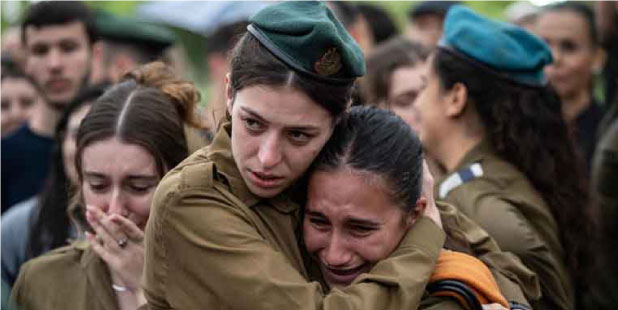
Israel Has The Most Moral Military In The World
April 10, 2024In the heart of a region often riddled with conflict, Israel stands out not only for its technologi...
-

The Resilience of the Israeli People
April 2, 2024Visitors from around the world have seen Hamas's October 7th Massacre's destruction in southern Isr...
-
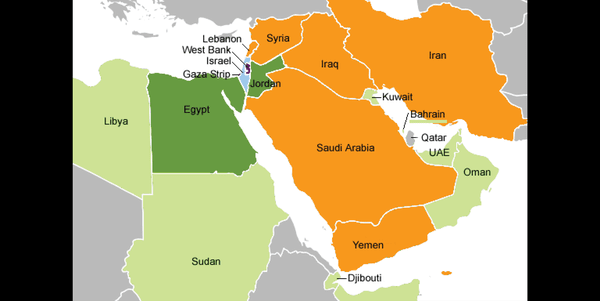
Israel: Small Size, Big Impact
March 21, 2024Nestled along the eastern edge of the Mediterranean Sea, Israel is a land of immense historical sig...
-
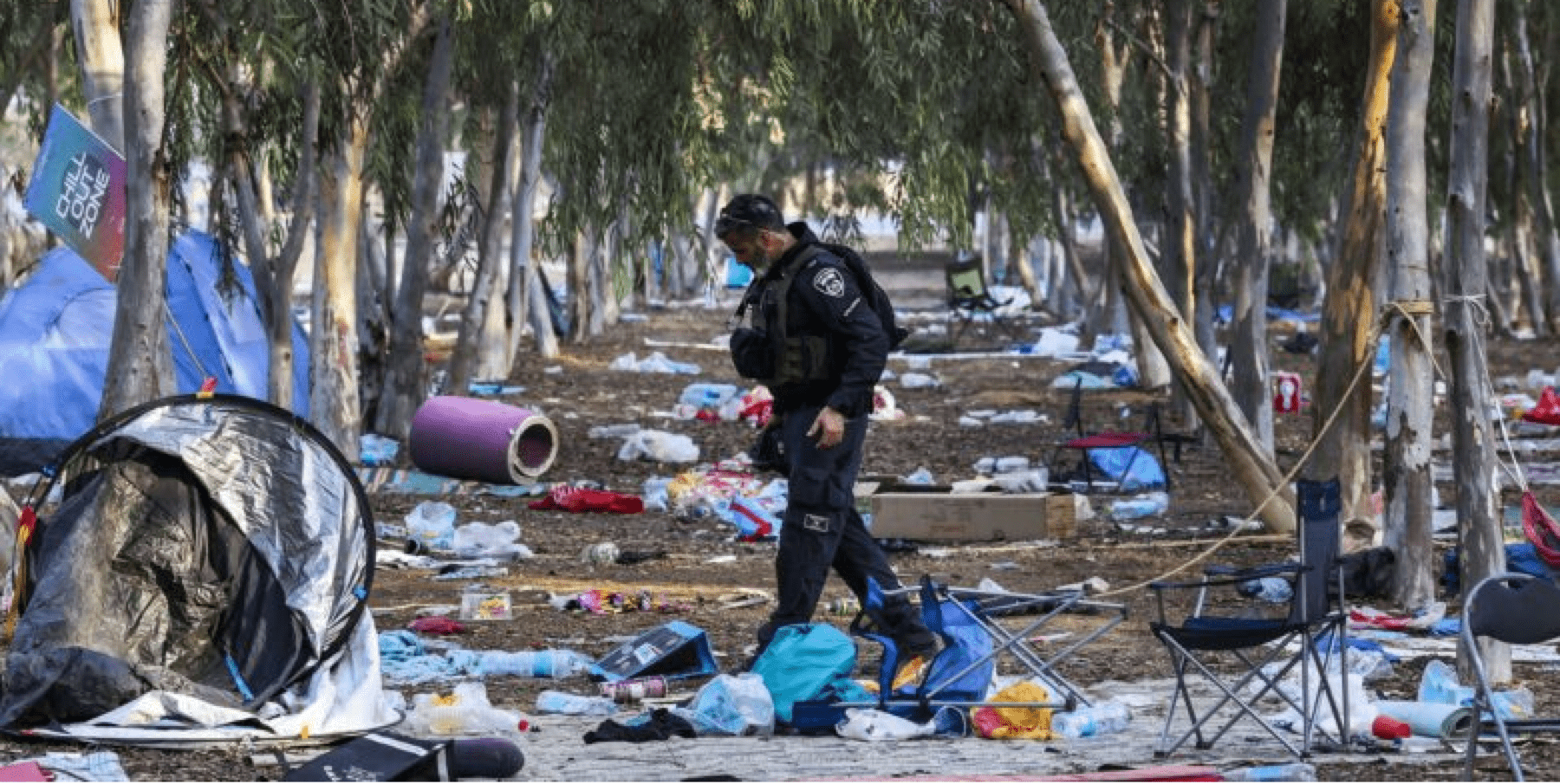
Israelis Are Fighting For Their Lives
February 21, 2024By Jonathan S. Tobin The world looks a lot different from Kibbutz Kfar Aza than it does in the U...
-
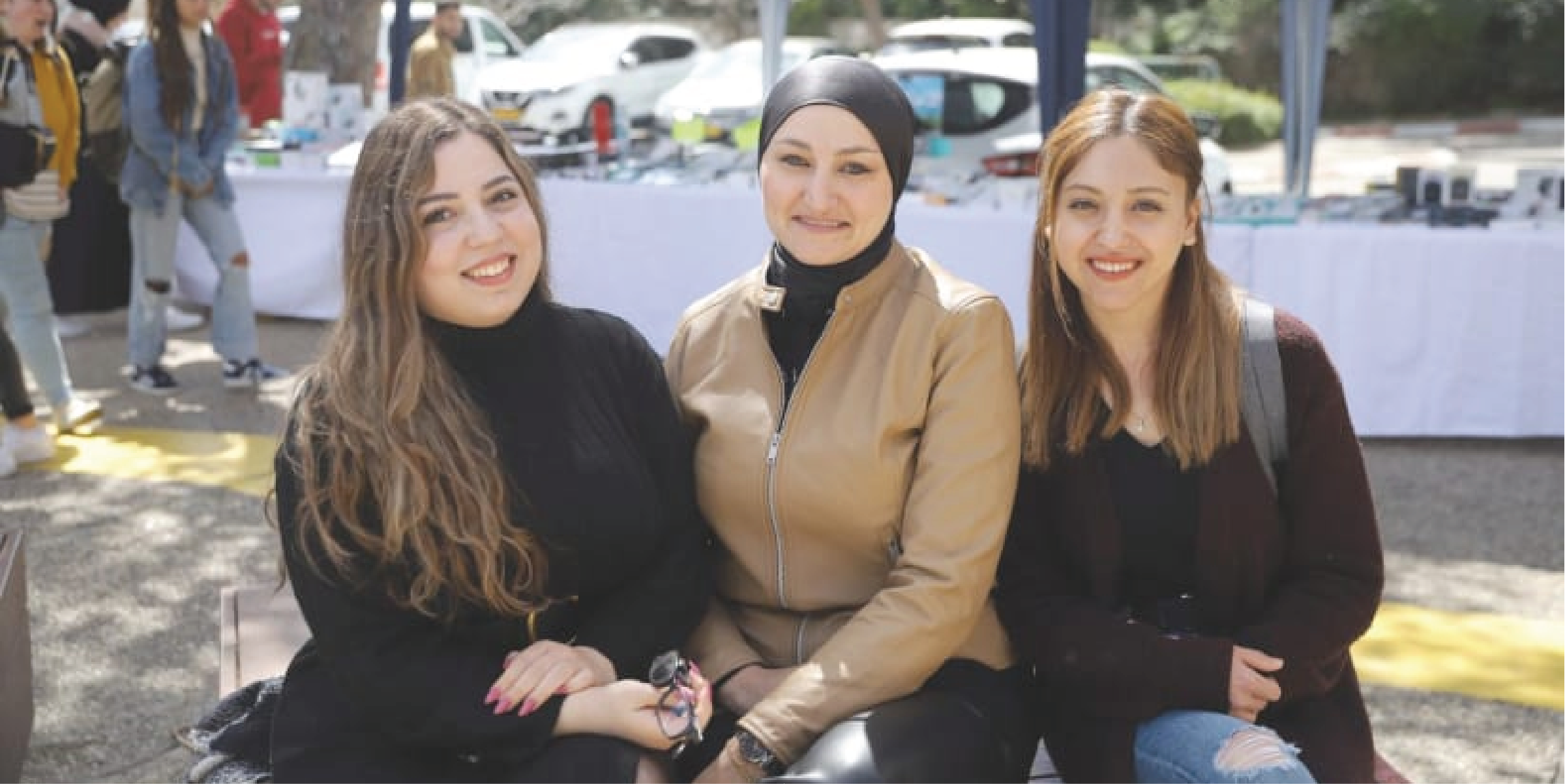
Over 2 Million Arabs Live In Israel
January 23, 2024In the complex landscape of the Middle East, where diverse cultures and identities intersect, Israe...
-

'Fauda' Star Idan Amedi Injured Fighting in Gaza
January 8, 2024Despite the severity of his injuries, Amedi's father assured Israeli news channels that his life is...
-

Israel Is A Great Country To Live In
December 28, 2023Nestled at the crossroads of the Middle East, Israel stands as a vibrant and dynamic nation, offeri...
-
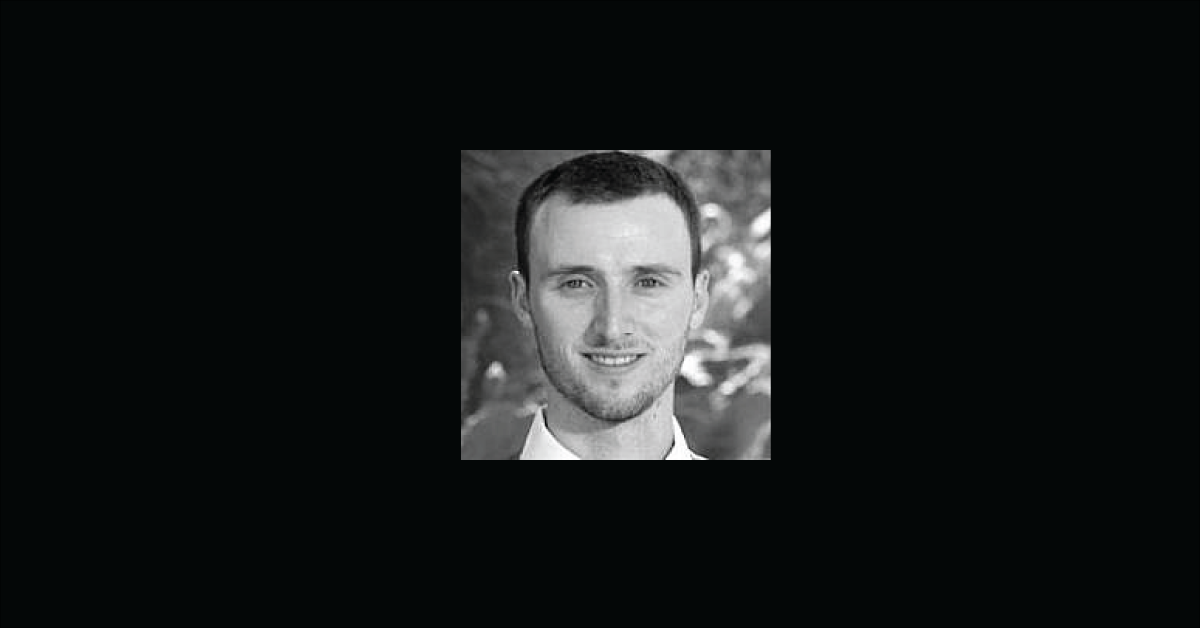
Dear World: I Don't Care
November 2, 2023By Avi Lewis I don’t care that you sympathize with Hamas I know you wouldn’t tolerate any of ...




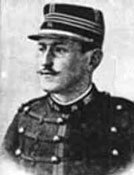
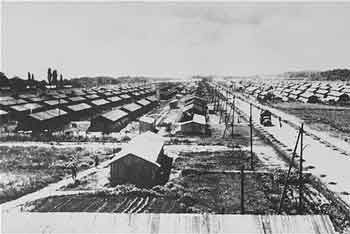


















Great article!
Very informative!